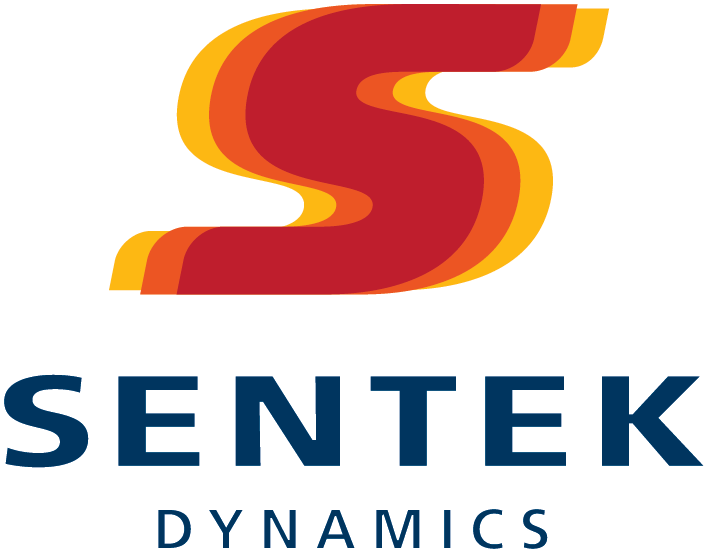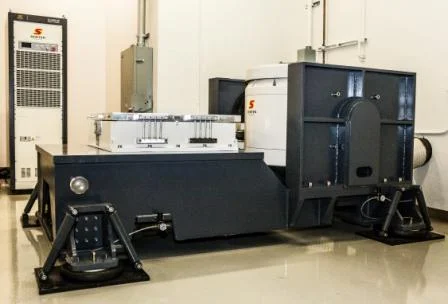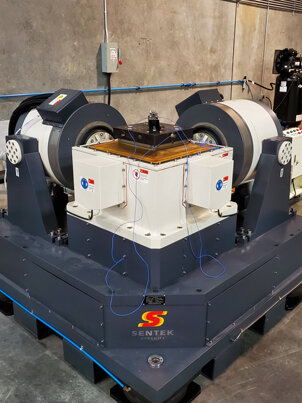Simultaneous 3-axis vibration testing has several unique advantages compared with vibration testing in one axis at a time. The primary advantages include, but are not limited to, the ability to reproduce a real-world environment identical to what the product sees in the field, and significant setup and test time savings compared to individual single-axis testing.
In vibration testing products for qualification or quality improvement, it is important to test the product in a manner that reflects its real-world environment. In the field, vibration happens in all three axes simultaneously, making it important to test a product in all three directions simultaneously. Specific failure modes exist that cannot be found testing each axis individually. Testing a product in each axis individually may allow a product to complete testing successfully with resulting reliability issues arising in the field when subjected to simultaneous vibration in all three axes. Sentek Dynamics' MA Series of simultaneous 3-axis vibration testing systems and Crystal Instruments' Spider-80M MIMO (Multiple-Input, Multiple-Output) vibration controller make it possible to qualify and improve product reliability by reproducing the vibration that a product is subjected to in the field.
Testing a product in each axis individually is time-consuming. A qualification test requiring 20 hours of vibration testing in each axis would take 60 hours plus setup time between axes to complete. Assuming only one product can be tested at a time, a 20-hour qualification test with five samples and 30 minutes of setup time per axis will require 750 hours of test time to complete. If the same tests were run on a simultaneous 3-axis vibration testing system, the test time for each sample would be reduced by 40 hours, and the setup time would be reduced by one hour per sample for a total reduction of 305 hours. The result is a very significant saving in test time and cost.
Throughput of products in production requiring vibration testing as part of acceptance test requirements can be increased by simultaneous 3-axis testing. A product requiring a 30-minute test in each axis with each axis change taking 30 minutes will take 180 minutes, or a total of 3 hours, to complete vibration testing. With simultaneous 3-axis testing, vibration testing can be completed in 60 minutes for two-thirds savings in time and cost.
The advantages of simultaneous 3-axis testing are potentially offset by the simultaneous 3-axis vibration testing system's higher cost. However, the payback is quick as the simultaneous 3-axis system reduces setup and test time by two-thirds, which translates to lower operational and system maintenance costs.
Simultaneous 3-axis testing is a cost-effective way to identify and correct product design problems and reduce warranty costs. To bring qualified, reliable products faster to market in this competitive world, we invite you to contact the Sentek Dynamics' Sales Team at sales@sentekdynamics.com or the Crystal Instruments' Sales Team at sales@go-ci.com for more information on the advantages of simultaneous 3-axis testing.


